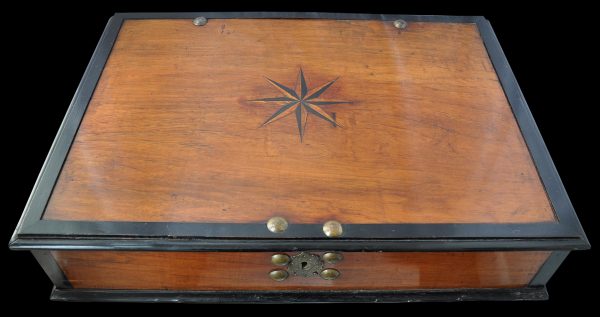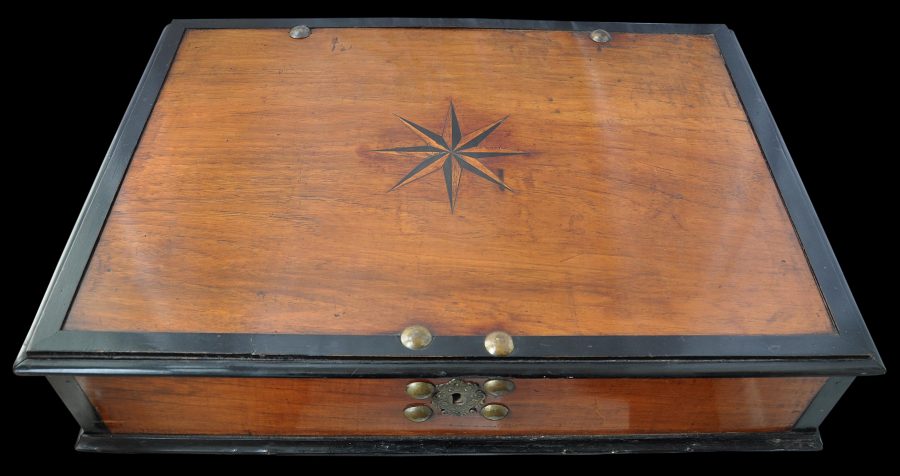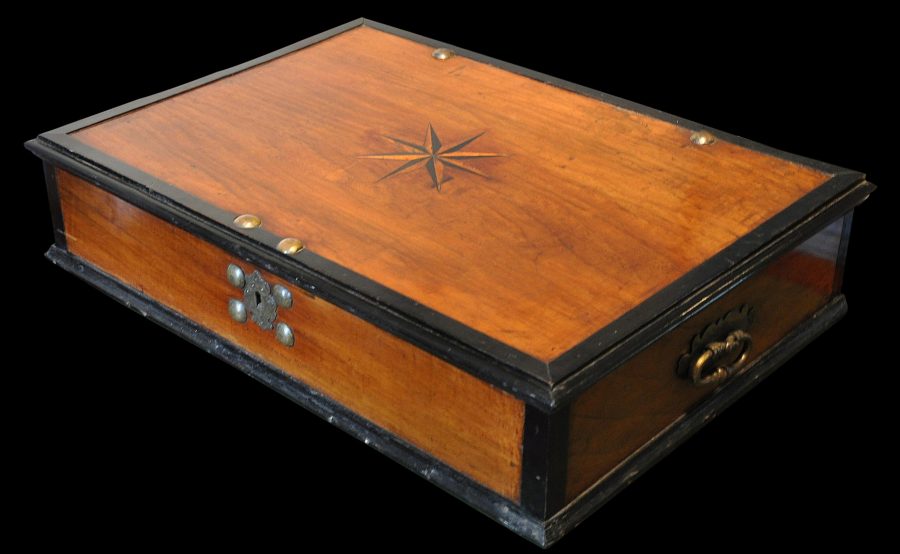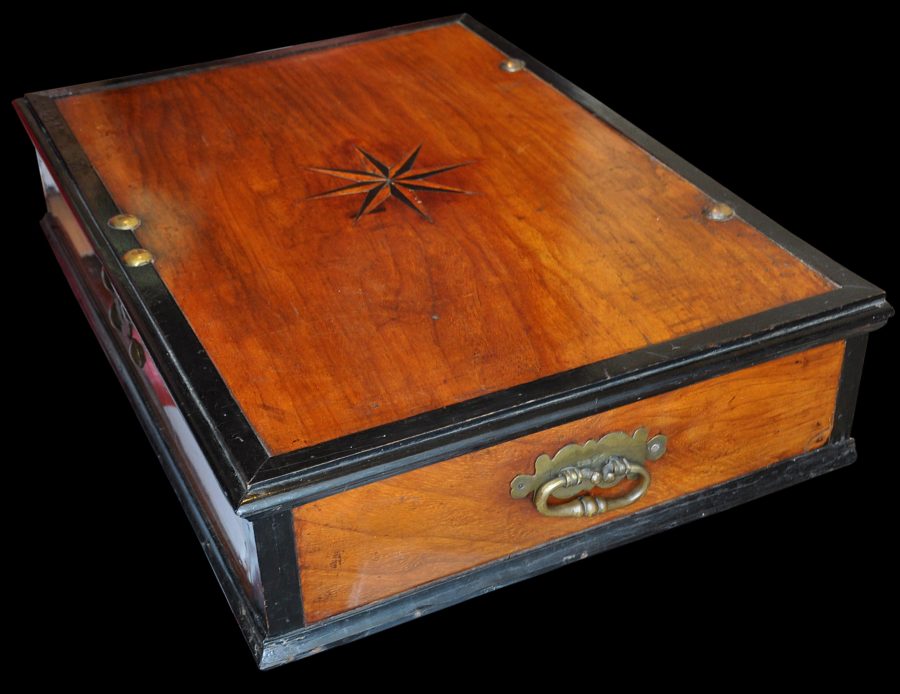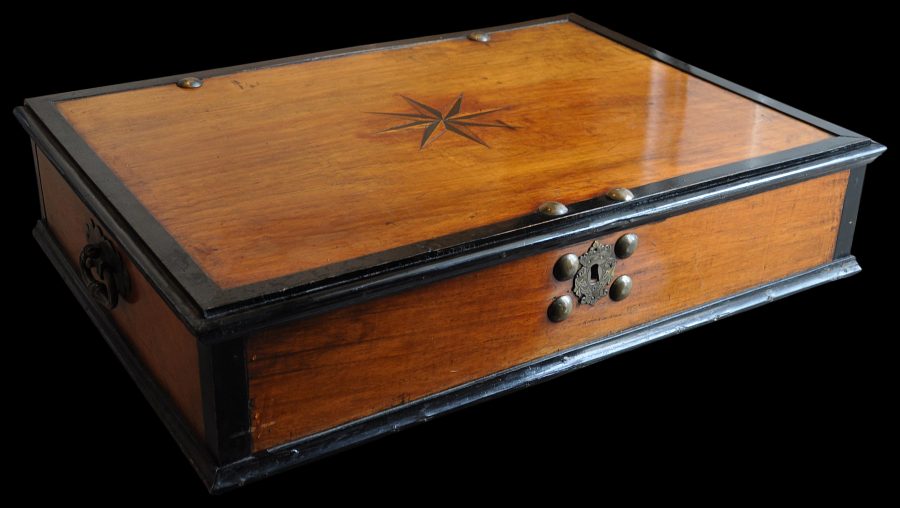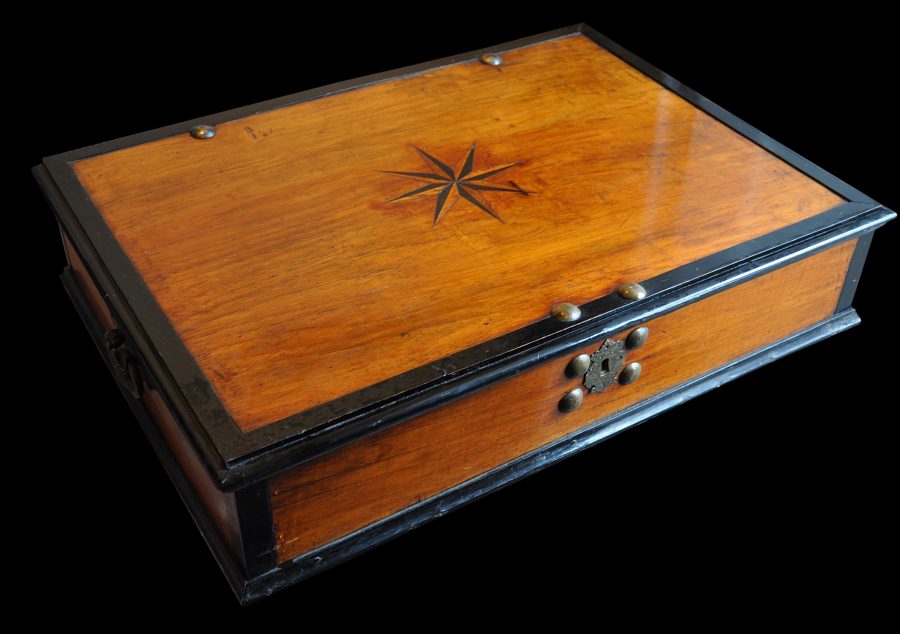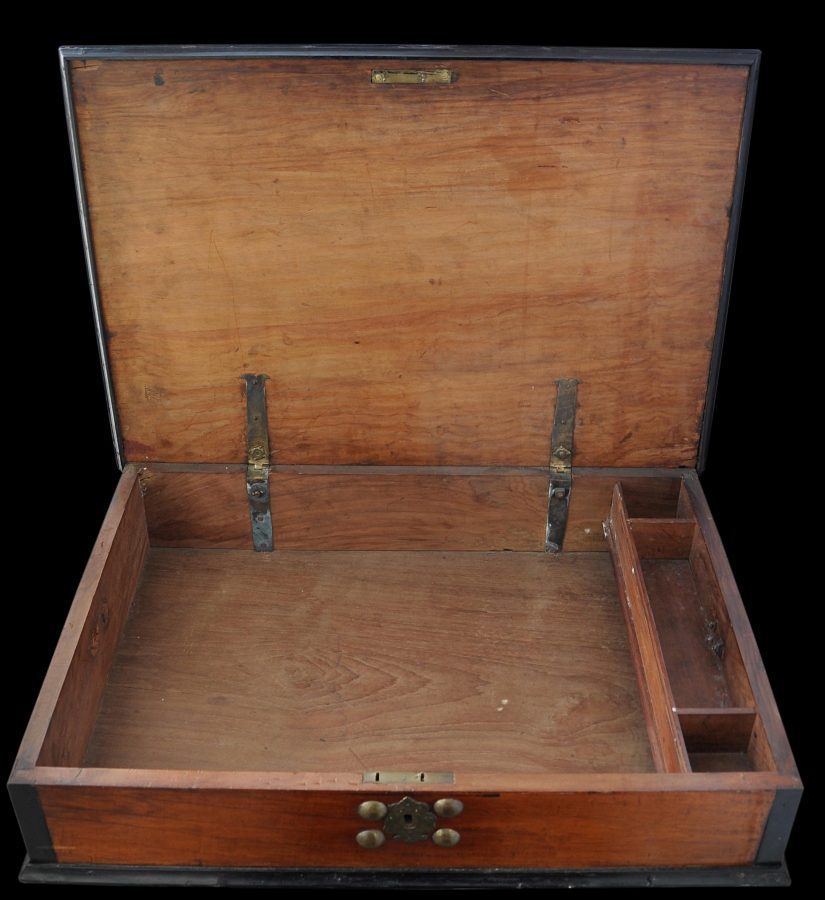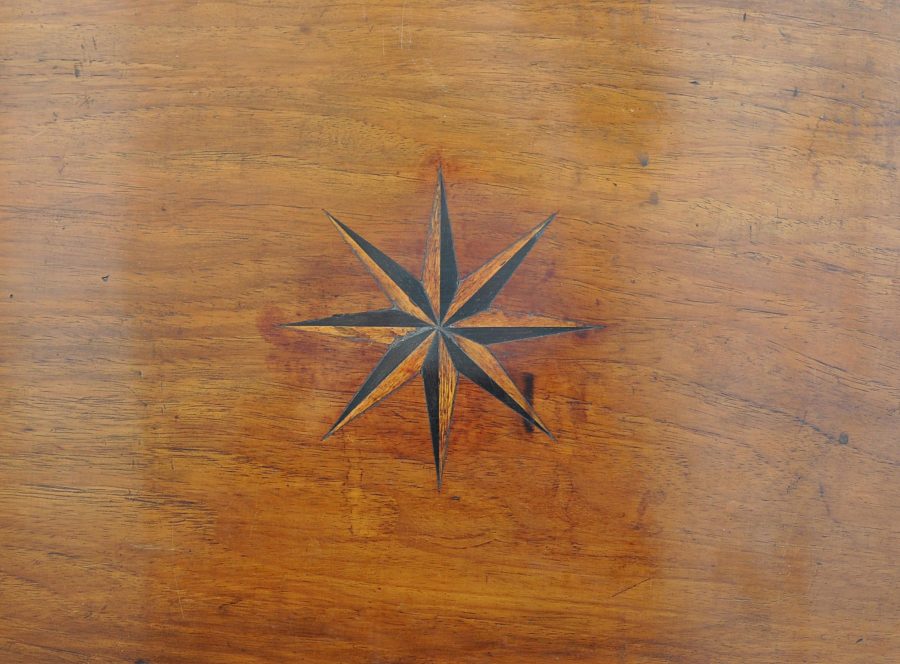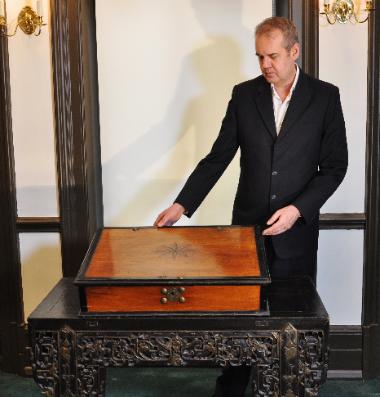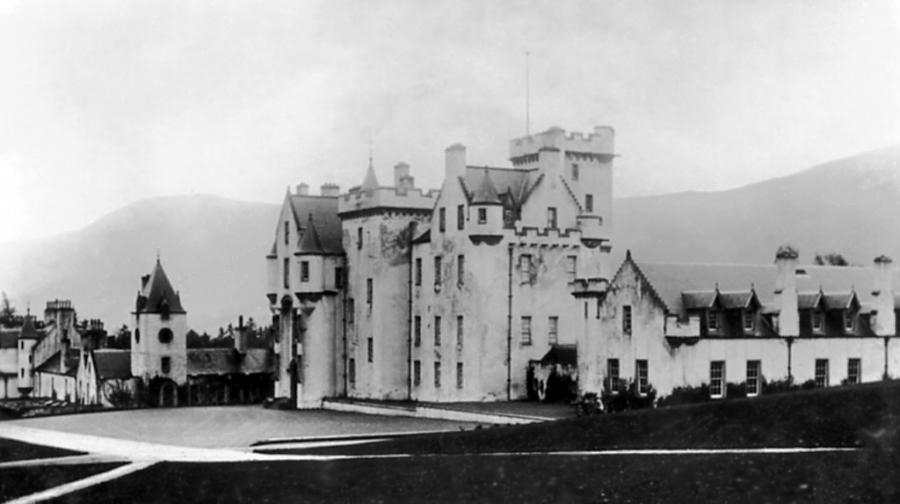This document box, which has come direct from Scotland’s Blair Castle, seat of the Lairds of Blair, is extraordinary for its fine condition, the quality of the ebony inlay work of which the high point is a star motif in the centre of the lid, but most particularly for its size: it is massive.
At more than 70cm long it is perhaps the largest such box we have encountered. Nor have we found any published example that is larger.
It comprises a large box with a hinged lid, the lid with ebony edging and inlay. The use of ebony provides a pleasing contrast with the lighter-coloured teakwood, but is also practical as ebony is very hard and so highly suitable as a protective edging.
Brass domed knobs that cover the bolts further embellish the lid. Both sides of the box have brass carrying handles and there is a brass lock plate to the front.
The interior contains a small compartment for writing utensils.
The box is in very fine condition with no significant losses or repairs.
Senior officials of and merchants in the service of the Dutch East India Company (VOC) were required to routinely send written communications about trade, local political developments, culture and any other events or observations deemed potentially useful for the Company’s interests. And usually everything had to be copied three or four times (Veenendaal, 1985, p. 85). Accordingly, portable writing cabinets and boxes were much in demand in late seventeenth and eighteenth century Batavia, India and Sri Lanka. The more senior and official, the more reports and correspondence with which he was required to deal, so perhaps the unusually large size of this document box is meant to convey the owner’s particularly senior status. The owner’s status is also suggested by the use of a crown over the keyplate.
Blair Castle (see the last image) reputedly is the oldest continually inhabited mansion in Scotland. The Blair family traces its ancestry back to the reign of William the Conqueror. It was at this time that the Barony of Blair was awarded to a Norman knight Jean Francois, who became the first Laird of Blair – a Laird being a title specific to Scotland and being granted to the owner of a substantial and distinctive landed estate. A Laird ranks below a Baron and above an Esquire in the non-peerage table of precedence.
William Fordyce Blair, the 25th Laird (1805-1888) joined the Royal Navy at the age of fourteen and rose to the rank of Captain. He served for the First Anglo-Burmese War (1824-26) and later served in the South China Sea suppressing pirates. It is possible that the document box was acquired during this Laird’s time, if not before.
References
Jackson, A. & A. Jaffer, Encounters: The Meeting of Asia and Europe 1500-1800, V&A Publications, 2004.
Jaffer, A., Luxury Goods from India: The Art of the Indian Cabinet Maker, V&A Publications, 2002.
Tchakaloff, T.N. et al, La Route des Indes – Les Indes et L’Europe: Echanges Artistiques et Heritage Commun 1650-1850, Somagy Editions d’Art, 1998.
Veenendaal, J., Furniture from Indonesia, Sri Lanka and India During the Dutch Period, Foundation Volkenkundig Museum Nusantara, 1985.


